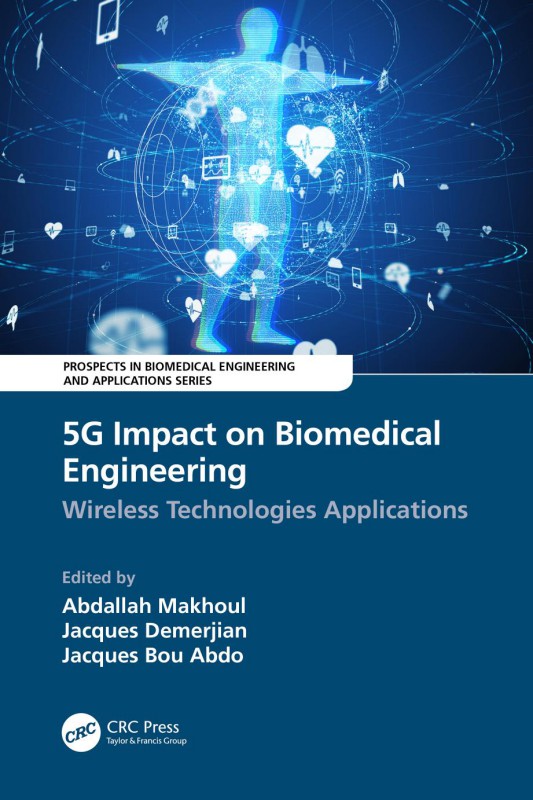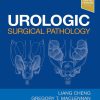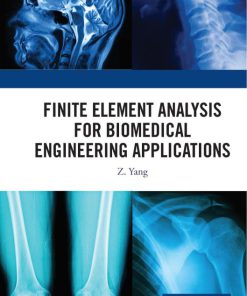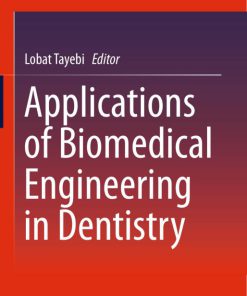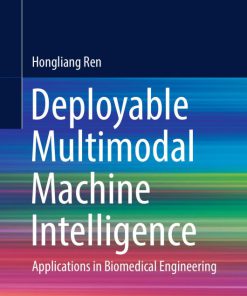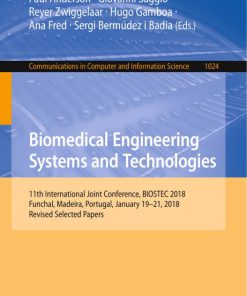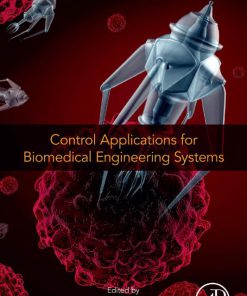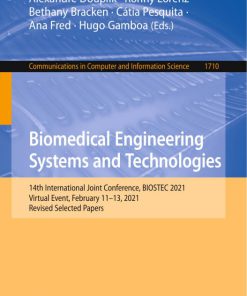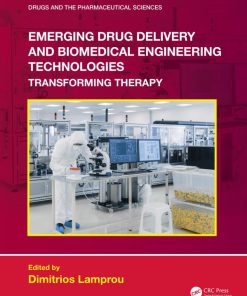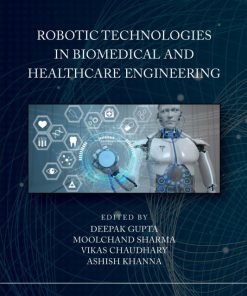(Ebook PDF) 5G Impact on Biomedical Engineering Wireless Technologies Applications 1st edition by Jacques Bou Abdo 1000488349 9781000488340 full chapters
$50.00 Original price was: $50.00.$25.00Current price is: $25.00.
Authors:Jacques Bou Abdo , Series:Biomedical [65] , Tags:Technology & Engineering / Biomedical Technology & Engineering / Microwaves Technology & Engineering / Mobile & Wireless Communications , Author sort:Abdo, Jacques Bou , Languages:Languages:eng , Published:Published:May 2022 , Publisher:CRC Press , Comments:Comments:This book is dedicated to studying the innovations and advancements of wireless networks for biomedical applications. This book focuses on a wide range of wireless technologies including body sensor networks, mobile networks, internet of things, mobile cloud computing, pervasive computing and wearable computing.
5G Impact on Biomedical Engineering: Wireless Technologies Applications 1st edition by Jacques Bou Abdo – Ebook PDF Instant Download/DeliveryISBN: 1000488349, 9781000488340
Full download 5G Impact on Biomedical Engineering: Wireless Technologies Applications 1st edition after payment.
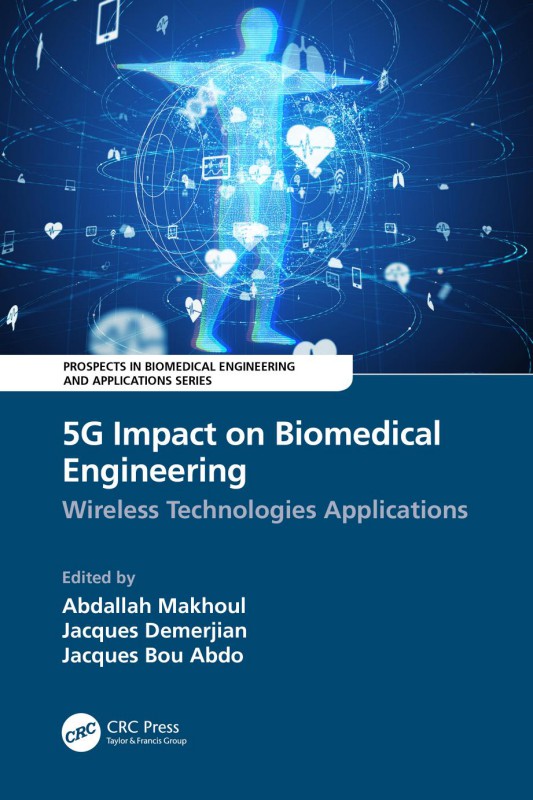
Product details:
ISBN-10 : 1000488349
ISBN-13 : 9781000488340
Author : Jacques Bou Abdo
Considering the importance of wireless networks in healthcare, this book is dedicated to studying the innovations and advancements of wireless networks for biomedical application and their impact. This book focuses on a wide range of wireless technologies related to healthcare and biomedical applications which include, among others, body sensor networks, mobile networks, internet of things, mobile cloud computing, pervasive computing and wearable computing. First the authors explain how biomedical applications using wireless technologies are built across networks. The authors also detail 5G spectrum splicing for medical applicatons. They then discuss how wearable computing can be used as activity recognition tools for biomedical applications through remote health monitoring and and remote health risk assessment. Finally the authors provide detailed discussions on security and privacy in wirelessly transmitted medical senor data. This book targets research-oriented and professional readers. It would fit as a recommended supplemental reading for graduate students. It also helps researchers enter the field of wireless biomedical applications.
5G Impact on Biomedical Engineering: Wireless Technologies Applications 1st Table of contents:
I Introduction
1 Healthcare 4.0: Technologies and Policies
1.1 Introduction
1.2 Technology and e-Health
1.2.1 e-Health through Cloud Computing
1.2.2 e-Health through Internet of Things
1.2.3 e-Health through 5G
1.3 Policy Challenges
1.3.1 Trust and Data Privacy
1.3.2 Incentives for Using e-Health
1.3.3 Responsibility and Evidence
1.3.4 Spectrum Licensing and Regulation
1.4 Conclusion
2 Management of Collaborative BSN in Smart Environments
2.1 Introduction
2.2 BSN Architecture and Technologies
2.2.1 General Architecture
2.2.2 BSN Applications
2.2.2.1 Medical Applications
2.2.2.2 Non-Medical Applications
2.2.3 Sensors Types, Properties, and Challenges
2.2.3.1 Sensors Types
2.2.3.2 BSN Challenges
2.2.4 Sensors’ Wireless Communication Technologies
2.3 From BSN to CBSN
2.3.1 Introduction
2.3.2 CBSN Concept and Architecture
2.3.3 CBSN Applications
2.3.4 Comparison between BSN and CBSN
2.3.5 Major Challenges in CBSN
2.3.6 Open Research Issues in CBSN
2.3.6.1 Sensor Nodes
2.3.6.2 Data Fusion
2.3.6.3 MAC Protocols
2.3.6.4 Routing
2.3.6.5 Inter-BSN Communication
2.3.6.6 Coverage and Connectivity
2.3.6.7 Localization and Tracking
2.3.6.8 Power Supply and Energy Concern
2.3.6.9 Security
2.4 Conclusion
II Communication Technologies
3 Smart Resource Allocation for LoRaWAN-based e-Health Applications in Dense Deployments
3.1 Introduction
3.2 Related Works
3.2.1 SF Allocation in LoRaWAN
3.2.2 Contribution
3.3 System Model and Specifications
3.4 Optimization Problem for SF Selection
3.5 Spreading Factor Selection Game in LoRaWAN
3.6 Distributed Learning for SF Selection in LoRaWAN
3.7 Experimental Evaluation
3.7.1 SF Selection Game vs. EXP3
3.7.2 Energy Efficiency in LoRaWAN
3.8 Conclusion
4 Dynamic Health Assessment in Water Environments using LPWAN Technologies
4.1 Introduction
4.2 Application Domains in Water Environments
4.2.1 First Aid Operations
4.2.2 Monitoring Floods
4.3 Real-time Monitoring Systems in Water Environments
4.3.1 Discovering Navigation Environment
4.3.2 Survivors Identification and Assessment of Their Health Conditions
4.4 Wireless Communication in Water Networks
4.4.1 LTE-M Communication
4.4.2 NB-IoT Communication
4.4.3 LoRa Communication
4.5 Proposed LoRa-based Monitoring System
4.6 Conclusion
5 Quality of Service Provisioning for Ambulance Tele-medicine in a Slice-based 5G Network
5.1 Introduction
5.2 Tele-medicine 5G Network Slice
5.2.1 Network Slicing
5.2.2 5G Reference Slices
5.2.3 Tele-Medicine Network Slice Architecture
5.3 Mobility Management Solution Overview
5.3.1 Slice Attachment
5.3.2 Slice Handover Solution
Slice handover definition
Slice handover operations
5.4 Slice Selection Function
5.4.1 Related works
5.4.2 Slice Selection Algorithm
5.4.3 End-to-End Slice Load Utility Calculation
5.4.4 Candidates PoA QoS Utility Calculation
5.4.5 Target Slice Selection
5.5 Performance Evaluation
5.6 Conclusion
6 Routing Protocol Algorithms for Single-Body and Multi-Body Sensor Networks
6.1 Introduction
6.2 Related Work
6.3 Comparison of Different Routing Models
6.4 An Efficient Cluster-based Routing Model
6.4.1 Cluster Formation
6.4.2 Cluster Head Election
6.4.3 Routing Operation
6.5 Implementation and Results
6.6 Conclusion
III Applications
7 Towards WBSNs Based Healthcare Applications: From Energy-Efficient Data Collection to Fusion
7.1 Introduction
7.2 WBSN: Architecture and Biosensor Nodes
7.3 Healthcare Applications
7.4 Healthcare Application Requirements
7.5 Energy-Efficient Mechanisms
7.6 Multi-sensor Data Fusion
7.7 Challenging Aspects in Data
7.8 High-Level Fusion: Data-Driven vs Knowledge-Driven Approaches
7.9 Discussion
7.10 Conclusion
8 Data Quality Management for Pervasive Health Monitoring in Body Sensor Networks
8.1 Introduction
8.2 Data Quality Basic Concepts
8.2.1 Data Quality Dimensions
8.2.2 Data Quality Factors
8.2.2.1 Sensor level
8.2.2.2 Human level
8.2.2.3 Network level
8.3 Data Quality Remedies
8.3.1 Data Cleaning Approaches in WSNs
8.3.2 Data Cleaning Approaches in Healthcare Industry
8.4 Conclusion
9 Wireless Techniques and Applications of the Internet of Medical Things
9.1 Introduction
9.2 Historical view and trends of IoMT in medical applications
9.2.1 Physiological Analysis
9.2.2 Rehabilitation Systems
9.2.3 Nutritional Evaluation and Skin Pathologies
9.2.4 Epidemic Infections and Diseases Spot Localization
9.2.5 Diabetes Treatment
9.3 Advantages of IoMT
9.4 Wireless Technology for Healthcare
9.5 Mobile Communications for Healthcare
9.5.1 Security Threats
9.5.2 Wireless Communication and HIPAA Compliance
9.5.3 Considerations of Wireless Technology in the Healthcare System
9.6 IoT-based Healthcare Applications
9.6.1 IoMT-based Health Monitoring
9.6.2 Application of COVID-19 Fighting Using Cognitive Internet of Medical Things
9.6.3 Early Identification and Monitoring of COVID-19 Individuals Deploying IoMT-based Framework
9.7 Conclusion
10 Deep Learning for IoT-Healthcare Based on Physiological Signals
10.1 Introduction
10.2 Physiological Signals
10.2.1 Electrocardiogram
10.2.2 Photoplethysmogram
10.2.3 Electromyogram
10.2.4 Electrodermal Activity
10.2.5 Electroencephalography
10.3 Deep Learning
10.3.1 Generative Models
10.3.1.1 Restricted Boltzmann Machine
10.3.1.2 Autoencoder
10.3.2 Hybrid Models
10.3.3 Discriminative Models
10.3.3.1 Multi-Layer Perceptron
10.3.3.2 Convolutional Neural Network
10.3.3.3 Long Short-Term Memory
10.4 Deep Learning-based Physiological Signals Analysis
10.4.1 Time Series Classification
10.4.2 Physiological Signals Cleaning
10.4.3 Artifacts Removal
10.5 Conclusion
People also search for 5G Impact on Biomedical Engineering: Wireless Technologies Applications 1st:
5g impact on healthcare
5g impact on humans
5 facts about biomedical engineering
5g impact on health
what is the impact of 5g on health and environment

